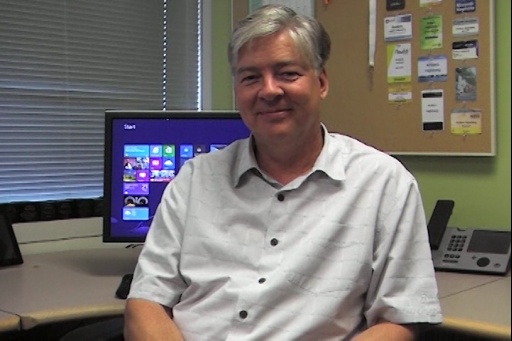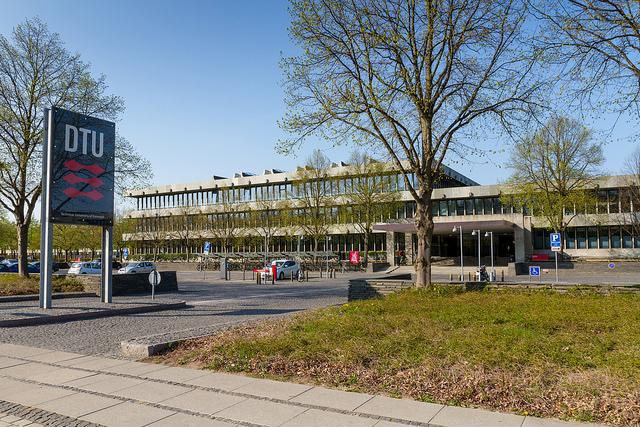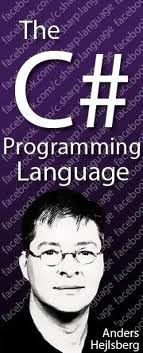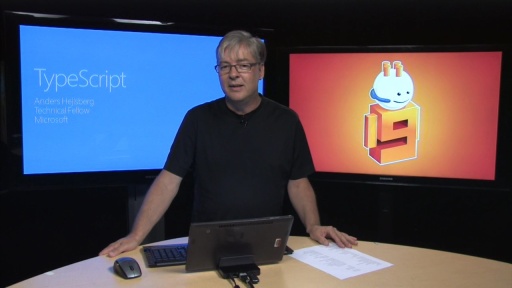A person. Anders Hejlsberg - creator of Turbo Pascal, Delphi and C #

“I wrote a huge number of useful programs. And quite a bit useless "
Some people have a need to create something new. When this need is fully realized, works of art, scientific discoveries, breakthrough technologies appear. Such a person is Anders Hejlsberg, the creator of Turbo Pascal, Delphi and C #.
For many university students, Turbo Pascal is still the first language from which they begin their acquaintance with programming. At one time it was a kind of breakthrough in software development. No wonder "the people" did not go Pascal, namely Turbo Pascal.
')
However, Hejlsberg did not stop there. Thanks to his undying need to create new Delphi and C # appeared. Therefore, for many Anders is one of the "superheroes" of the IT industry.
The first steps
Anders Hejlsberg was born in December 1960 in the largest city of Denmark - Copenhagen, which is also its capital.
Hejlsberg wanted to get an engineering education at Lyngby Technical University, but he could not finish it.

The Danish Technical University is a technical university and research institute located in Lyngby-Torbek, north of Copenhagen.The young man was passionate about programming since childhood. At university, Anders wrote programs for Nascom machines.
“In 1979, I founded the computer company PolyData in Denmark. It was a time when personal computers did not exist. We sold computer systems and wrote software for them. I wrote an assembler, a disassembler, a small operating system and several extensions for Microsoft ROM-Basic5.
My very first big project was a Pascal compiler and an editor that could replace ROM-Basic, ” recalls Hejlsberg.
Turbo pascal
In 1980, when Hejlsberg was twenty years old, his passion resulted in his own hand-written compiler of the Pascal language. Originally it was Blue Label Software Pascal for the Nascom-2. Then he ported the compiler for CP / M and the popular operating system of those years MS DOS. As a result, the compiler was named Compas Pascal, and later - PolyPascal.

In 1983, we teamed up with the guys who had just founded Borland; they licensed our Pascal compiler and added their own editor there.Borland has released an IDE, currently known as Turbo Pascal.
I remember thinking they were crazy: these guys were selling a new product for $ 49.95, while it cost $ 500! But it quickly became clear that I was wrong: Turbo Pascal became very popular. We sold as many copies as it was impossible to imagine at the beginning.This version of the Borland integrated development environment was supported until 1995.
To solve financial problems, in 1987, Anders moved to California (USA), where he became the chief engineer of Borland.
Delphi
In 1996, Hejlsberg and his team released a development environment called Delphi. Object Pascal was used as the base programming language, which was also developed by the same team.
When Borland began work on Object Pascal, its progenitor (Pascal, once created by Wirth) was in a rather neglected state. Many functions have been revised and revised, much has been added and written from scratch. And in the end, the changes were so colossal that the developers created, one might say, a new programming language.

The new IDE Delphi got its name in honor of the ancient Greek city Delphi. The name was chosen for a reason: the city of Delphi is associated with the name of the god of wisdom and the patron of the arts of Apollo. According to legend, the main sanctuary of Apollo was located in this city. His priestess-sibyls spoke prophecies to those who wanted to know their fate.“If we recall the previous Borland products, it should be noted that Turbo Pascal was very successful - products with integrated development environments significantly increased the productivity of programmers. However, the first version of Turbo Pascal for Windows still did not solve the most significant problems faced by developers of Windows applications, and it quickly became clear to us exactly what we had to do to solve these problems. Creating Windows applications had to begin with designing the user interface, and this was the key idea of the new product.
When we released Delphi, it became the first rapid application development tool based on a compiled programming language, while Visual Basic existed at that time could only create p-code and was essentially based on an interpreter. I can say that it was the creation of Delphi that stimulated the appearance of the compiler in the machine code in subsequent versions of Visual Basic, ” says Hejlsberg.
The new development environment was eagerly launched and quickly worked on machines running the Windows operating system. Microsoft could not ignore this fact and the talented engineer Hejlsberg.
Every year a new version of Delphi appeared, but after the fifth, the periodicity was broken. It turned out that in parallel with the development of a new version of Delphi, a new, Delphi-like programming language for Linux was being developed. New product called Kylix.
Delphi had a huge impact on the creation of the concept of the C # language for the .NET platform. Many of its elements and conceptual solutions have become part of C #. This was to be expected because Anders Hejlsberg was nevertheless lured to Microsoft.
Microsoft and C #

In 1996, Anders went to work at Microsoft: instead of the $ 200 thousand he received at the old place, Bill Gates offered $ 2.5 million. There, he first worked with projects such as J ++ and Foundation Classes. But then he headed the team developing the C # language. Programmers such as Scott Wiltamut and Peter Golde worked under his leadership.
I was the main architect of the language. The team consisted of four people. We met for two or three hours three times a week.Microsoft decided to celebrate the new millennium with the release of new software products. By 2000, the company had prepared industrial versions of new component technologies and solutions in the field of messaging and data, as well as creating Internet applications (COM +, ASP +, ADO +, SOAP, Biztalk Framework). In support of these innovations, Microsoft has released an application development toolkit - the .NET platform. She also united several programming languages "under one roof", which was a novelty for that time.
Another innovation of the .NET platform was the technology of Active Server Pages (ASP.NET) (Active Server Page). With its help, it was possible to develop web applications interacting with databases relatively quickly.
The C # programming language was created specifically for ASP.NET. ASP.NET itself was completely written in C #.

“In my opinion, the main difference between C # and other programming languages, especially Java, is that we have tried to stay as close as possible to C ++,” explained Anders Hejlsberg.
When we created the C # language, we had several goals. First of all, create the first component-oriented language from the C / C ++ family. If you remember how application development was done five or even ten years ago, we will see that many developers already created a special environment in order to organize an application to run on demand, to perform a specific task and stop it.
With the advent of the Web phenomenon and the client-server architecture, the nature of applications has changed. Now, a set of components that run under control of a process is often created — business objects for middle-level applications, stored procedures in database servers, and it is the combination of such components that is now called an application.
In addition, we had in mind how developers are now designing and creating software. A modern approach to designing applications (including HTML pages and business objects) usually involves using the concept of properties, events and methods of components or objects, as well as the property inspector to modify them.
It follows that for component-oriented programming and for the industry as a whole, it is extremely important to integrate support for the component concept into programming languages. This was one of the key goals of creating C #.
Our goal was also to create a more productive version of C ++. It is known that developers love this language for its power and almost unlimited possibilities, but the problem of using C ++ is that its power is used for 1% of the time, and 99% of the time it takes to understand which language construct to use to solve a problem. We decided to create a simplified version of C ++ to increase developer productivity.
Epistolary genre
 One of the few books Anders Hejlsberg wrote is C # Programming Language. This book was written in collaboration with other professionals who were part of Microsoft’s C # development team. This book is a kind of “bible” of the developer, which can easily replace both MSDN and the rest of the books on C #, devotees of Hejlsberg's creativity believe.
One of the few books Anders Hejlsberg wrote is C # Programming Language. This book was written in collaboration with other professionals who were part of Microsoft’s C # development team. This book is a kind of “bible” of the developer, which can easily replace both MSDN and the rest of the books on C #, devotees of Hejlsberg's creativity believe.The book has been reprinted four times. Since the 4th edition (2012), the book has included extensive comments written by famous programming gurus such as John Skit, Joseph Albahari, Bill Wagner, Christian Nagel, Eric Lippert and others.
Awards
In 2000, the magazine Dr. Dobb's Journal (a monthly computer magazine published in the United States) honored Anders Hejlsberg with an award for creating Turbo Pascal, Delphi and C #.
In 2007, he and his team received an award (“Outstanding Technical Achievement”) for creating the C # language.

Sean Catsenberger, Peter Hall, Scott Wiltamat, Anders Hejlsberg, Todd Proebsting, Peter Sollich, Eric Meyer
What's next
In 2012, Hejlsberg announced a new TypeScript project, which is being developed under the auspices of Microsoft.

TypeScript is backward compatible with JavaScript and compiles to the last. In fact, after compiling, a TypeScript program can be executed in any modern browser or used in conjunction with the Node.js server platform.
Since I have been working with computers, we only did that we raised the level of abstraction higher and higher. The path from machine code to assembler, then to C, then C ++, and now to the environment that controls the execution of code, such as .NET or Java, has already been covered. So far I see no signs that this list cannot be continued. In my opinion, I wonder if we can raise the level of abstraction higher than imperative programming.
In an RSDN interview, Anders spoke about who he feels more about.
Anders, who do you think you are: a programmer, a designer, an architect, a theorist?
- I think everyone has a little. Although I have to do high-level design, I still write code from time to time to keep myself in shape.
Source: https://habr.com/ru/post/314616/
All Articles